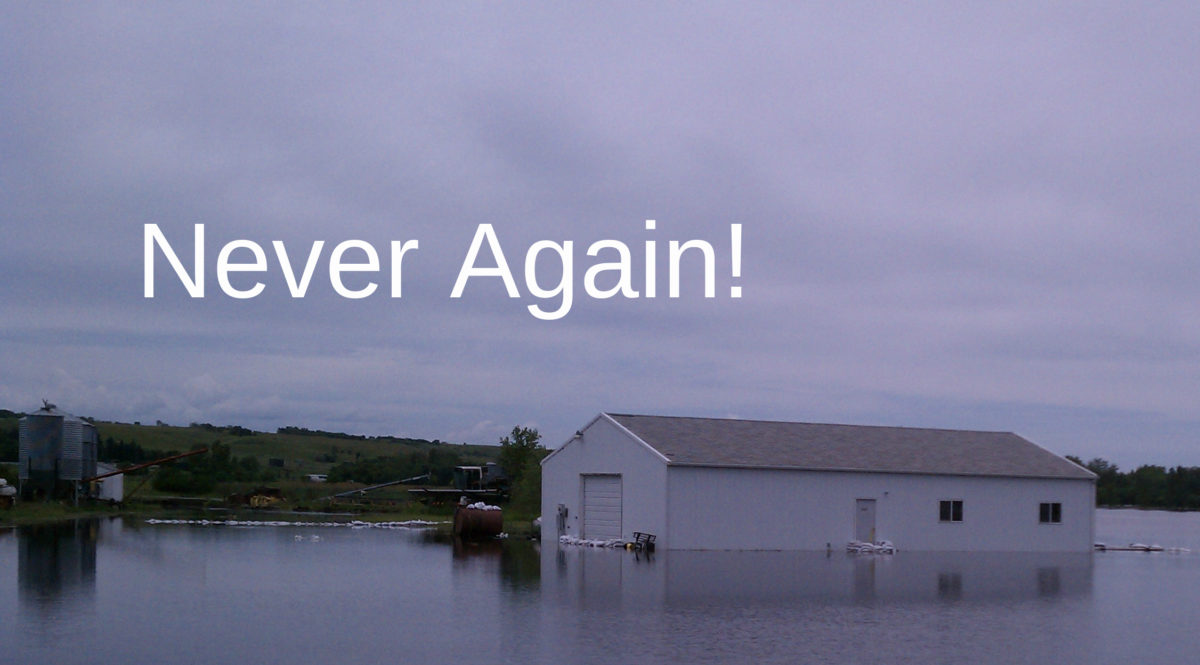It will be a long time before flooding isn’t in the Minot news towards the end of June, but this year there were a few more reasons than simply the time of year. The four-year anniversary was marked by a couple stories you should know about.
First of all, the Souris River Joint Board met last week in Estevan. The diplomatic work of rewriting the river and reservoir operating plan is ongoing, but don’t hang your hat on the bureaucratic process delivering improved flood protection anytime soon. Our local and state governments have stepped up financially, but this process requires movement from the federal governments in both Canada and the U.S.
Second and more locally, the Corps of Engineers was in town last week to help the City of Minot and other local agencies begin the process of creating an emergency action plan. The City of Minot’s intention is to have this plan in place by the 2016 flood season.
This is fantastic news; Minot desperately needs this. But it begs the question, why in the world has it taken four years start this process? And what does it say about us that it took the Corp of Engineers (the federal government’s poster child for red tape and bureaucracy) to get the things moving?
Now, to be fair and honest, I know — and you should know too — that the City of Minot is not starting this process from scratch. We have city employees who learned a lot from the 2011 flood, and we do have parts of our emergency action plan well in place. I believe we are better prepared today than we were in 2011.
But in my conversations with Minot officials, it has yet to be proven to me that a full accounting of the events of 2011 ever took place. That is to say, I can find no public evidence or documentation that anyone from the City of Minot sat down at a table with all of Minot’s stakeholders like the Minot Public Schools, Minot Parks, MSU, Trinity Health, Ward County and the citizens and asked the really hard questions. Questions like: what did we do wrong? What could we have done better?
And I’m not talking about the data collection, the river forecasting, the reservoir management, and getting the information from Canada (though all of that plays a role). I’m talking about on the streets of Minot, the place where the nitty gritty fight took place — What did we learn? Where are the billion-dollar lessons that we can hold up as examples of our experience?
This is the information that — if it exists — is not nearly as well documented and as public as it needs to be. And it’s a problem that should make you fighting mad. Why? Because this is something that we have control over. We don’t need the Corps of Engineers to do it, we don’t need the engineers or environmental impact studies, and we don’t even really need money. We just need to recognize that this process is the essential first step to improved flood protection and recovery. Then we need to get it done.
And here’s why it’s so vitally important. For those of you who live on the hills or are new to town since the flood, this will be hard if not impossible to understand, but for a lot of people who live and rebuilt in the valley, the sound of heavy rain is an anxiety inducing event. Every thunderstorm comes with a pit in their stomach. The 2011 flood will mark the lives of people, families, and this community forever. Going through the process of learning from our mistakes is the least we can do for those still living with the consequences of our lost fight.
Let’s Make This the Most Public Document in Minot’s History!
And when we’re done with the process of learning and we have our Emergency Action Plan in place, we should mail it to every house in Minot along with a magnet and a thumbtack so people can put it up somewhere obvious like the fridge or the bulletin board.
In the coming days, I’ll be publishing a list of questions that I believe have yet to be answered and concerns that have yet to be addressed. For today, tell us what you think in the survey below and the comments.
What Do You Think?
Minot’s comprehensive flood protection plan is years if not decades away from being complete. What if we had to fight another flood next year or even next week?
Oops! We could not locate your form.



